In 1909 Robert Millikan devised an ingenious experiment to figure out the charge of an electron using a drop of oil. Let’s talk about this Nobel Prize winning experiment
Continue reading “Astronomy Cast Ep. 372: Millikan Oil Drop”
How Dense is the Asteroid Belt?
We’ve seen way too many science fiction episodes that show asteroid belts as dense fields of tumbling boulders. How dense is the asteroid belt, and how to spacecraft survive getting through them?
For the purposes of revenue, lazy storytelling, and whatever it is Zak Snyder tells himself to get out of bed in the morning, when it comes to asteroids, Science fiction and video games creators have done something of disservice to your perception of reality.
Take a fond trip down sci-fi memory lane, and think about the time someone, possibly you, has had to dogfight or navigate through yet another frakkin’ asteroid belt. Huge space rocks tumbling dangerously in space! Action! Adventure! Only the skilled pilot, with her trusty astromecha-doplis ship can maneuver through the dense cluster of space boulders, dodging this way and that, avoiding certain collision.
And then she shoots her pew pew laser breaking up larger asteroids up into smaller ones, possibly obliterating them entirely depending on the cg budget. Inevitably, there’s bobbing and weaving. Pursuit craft will clip their wings on asteroids, spinning off into nearby tango. Some will fly straight into a space boulder.
Finally you’ll thread the needle on a pair of asteroids and the last ship of the whatever they’re called clicky clacky mantis Zorak bug people will try and catch you, but he/it won’t be quite so lucky. Poetically getting squashed like… a… bug. Sackhoff for the win, pilot victorious.
Okay, you probably knew the laser part is totally fake. I mean, everybody knows you can’t hear sounds in space. Outside of Starbuck being awesome, is that at all realistic? And if so, how does NASA maneuver unmanned spacecraft through that boulder-strewn grand canyon death trap to reach the outer planets?
The asteroid belt is a vast region between the orbits of Mars and Jupiter. Our collection of space rocks starts around 300 million kilometers from the Sun and ends around 500 million kilometers. The first asteroid, the dwarf planet Ceres which measures 950 km across, was discovered in 1801, with a “That’s funny.”. Soon after astronomers turned up many more small objects orbiting in this region at the “Oooh neat!” stage.
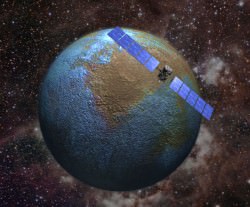
They realized it was a vast belt of material orbiting the Sun, with I suspect a “We’re all gonna die.”. To date, almost half a million asteroids have been discovered, most of which are in the main belt.
As mentioned in a another video, gathering up all the material in the asteroid belt and gluing it together makes a mass around 4% of the Moon. So, in case one of your friends gets excited and suggests it was a failed planet, you can bust out that stat and publicly shame them for being so 1996, Goodwill Hunting style. You like asteroids? How about them asteroids?
There’s a few hundred larger than 100 km across, and tens of millions of rocks a hundred meters across. Any one of these could ruin a good day, or bring a bad day to a welcome firey close for either a depressed wayfaring spacecraft or a little bluegreen speck of a planet. Which sounds dangerous all the way around.
Fortunately, our asteroid belt is a vast region of space. Let’s wind up the perspective-o-meter. If you divide the total number of objects in the field by the volume of space that asteroid belt takes up, each space rock is separated by hundreds of thousands of kilometers. Think of it as gravity’s remarkably spacious zen rock garden.
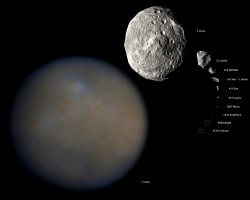
As a result, when NASA engineers plot a spacecraft’s route through the asteroid belt, they don’t expect to make a close encounter with any asteroids – in fact, they’ll change its flight path to intercept asteroids en route. Because hey look, asteroid!
Even though Ceres was discovered in 1801, it’s never been observed up close, until now. NASA’s Dawn spacecraft already visited Asteroid Vesta, and by the time you’re watching this video, it will have captured close-up images of the surface of Ceres.
Once again, science fiction creatives sold us out to drama over hard science. If you’re passing through an asteroid belt, you won’t need to dodge and weave to avoid the space rocks. In fact, you probably wouldn’t even know you were passing through a belt at all. You’d have to go way the heck over there to even get a nearby look at one of the bloody things. So we’re safe, our speck is safe, and all the little spacecraft are safe…. for now.
Which dramatic version of “asteroids” are you most fond of? Tell us in the comments below.
Will the Universe Run Out Of Energy?
It seems like the good times will go on forever, so feel free to keep on wasting energy. But entropy is patient, and eventually, it’ll make sure there’s no usable energy left in the Universe.
Thanks to the donations of generations of dinosaurs and their plant buddies, we’ve got fossils to burn. If we ever get off our dependence on those kinds of fuels, we’ll take advantage of renewable resources, like solar, wind, tidal, smug and geothermal. And if the physicists really deliver the goods, we’ll harness the power of the Sun and generate a nigh unlimited amount of fusion energy using the abundant hydrogen in all the oceans of the world. Fire up that replicator, the raktajino is on the house. Also, everything is now made of diamonds.
We’ll never run out of H+. Heck that stuff is already cluttering up our daily experience. 75% of the baryonic mass of the Universe is our little one-protoned friend. Closely followed up by helium and lithium, which we’ll gladly burn in our futuristic fusion reactors. Make no mistake, it’s all goin’ in.
It looks like the good times will never end. If we’ve energy to burn, we’ll never be able to contain our urges. Escalating off into more bizarre uses. Kilimajaro-sized ocean cruise liners catering to our most indulgent fantasies, colossal megastructure orbital laser casinos where life is cheap in the arena of sport. We’ll build bigger boards and bigger nails.or something absolutely ridiculous and decadent like artificial ski-hills in Dubai. Sadly, it’s naive to think it’s forever. Someday, quietly, those good times will end. Not soon, but in the distant distant future, all energy in the Universe will have been spent, and there won’t a spare electron to power a single LED.
Astronomers have thought long and hard about the distant future of the Universe. Once the main sequence stars have used up their hydrogen and become cold white dwarfs and even the dimmest red dwarfs have burned off their hydrogen. When the galaxies themselves can no longer make stars. After all the matter in the Universe is absorbed by black holes, or has cooled to the background temperature of the Universe.
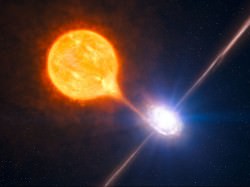
Black holes themselves will evaporate, disappearing slowly over the eons until they all become pure energy. Even the last proton of matter will decay into energy and dissipate. Well, maybe. Actually, physicists aren’t really sure about that yet. Free Nobel prize if you can prove it. Just saying.
And all this time, the Universe has been expanding, spreading matter and energy apart. The mysterious dark energy has been causing the expansion of the Universe to accelerate, pushing material apart until single photons will stretch across light years of distance. This is entropy, the tendency for energy to be evenly distributed. Once everything, and I do mean all things, are the same temperature you’ve hit maximum entropy, where no further work can be done.
This is known as the heat death of the Universe. The temperature of the entire Universe will be an infinitesimal fraction of a degree above Absolute Zero. Right above the place where no further energy can be extracted from an atom and no work can be done. Terrifyingly, our Universe will be out of usable energy.

Interestingly, there’ll still be the same amount it started with, but it’ll be evenly distributed across all places, everywhere. This won’t happen any time soon. It’ll take trillions of years before the last stars die, and an incomprehensible amount of time before black holes evaporate. We also don’t even know if protons will actually decay at all. But heat death is our inevitable future.
There’s a glimmer of good news. The entire Universe might drop down to a new energy state. If we wait long enough, the Universe might spontaneously generate a new version of itself through quantum fluctuations. So with an infinite amount of time, who knows what might happen?
Burn up those dirty dinosaurs while you can! Enjoy the light from the Sun, and the sweet whirring power from your counter-top Mr. Fusion reactor. Your distant descendants will be jealous of your wasteful use of energy, non-smothering climate and access to coffee and chocolate, as they huddle around the fading heat from the last black holes, hoping for a new universe to appear.
What’s the most extreme use of energy you can imagine? Tell us in the comments below.
Weekly Space Hangout – March 27, 2015: Dark Matter Galaxy “X” with Dr. Sukanya Chakrabarti
Host: Fraser Cain (@fcain)
Special Guest: Dr. Sukanya Chakrabarti, Lead Investigator for team that may have discovered Dark Matter Galaxy “X”.
Guests:
Morgan Rehnberg (cosmicchatter.org / @MorganRehnberg )
Dave Dickinson (@astroguyz / www.astroguyz.com)
Brian Koberlein (@briankoberlein)
Continue reading “Weekly Space Hangout – March 27, 2015: Dark Matter Galaxy “X” with Dr. Sukanya Chakrabarti”
Is the Universe Finite or Infinite?
Two possiblities exist: either the Universe is finite and has a size, or it’s infinite and goes on forever. Both possibilities have mind-bending implications.
In another episode of Guide to Space, we talked: “how big is our Universe”. Then I said it all depends on whether the Universe is finite or infinite. I mumbled, did some hand waving, glossed over the mind-bending implications of both possibilities and moved on to whatever snarky sci-cult reference was next because I’m a bad host. I acted like nothing happened and immediately got off the elevator.
So, in the spirit of he who smelled it, dealt it. I’m back to shed my cone of shame and talk big universe. And if the Universe is finite, well, it’s finite. You could measure its size with a really long ruler. You could also follow up statements like that with all kinds of crass shenanigans. Sure, it might wrap back on itself in a mindbending shape, like a of monster donut or nerdecahedron, but if our Universe is infinite, all bets are off. It just goes on forever and ever and ever in all directions. And my brain has already begun to melt in anticipation of discussing the implications of an infinite Universe.
Haven’t astronomers tried to figure this out? Of course they have, you fragile mortal meat man/woman! They’ve obsessed over it, and ordered up some of the most powerful sensitive space satellites ever built to answer this question.Astronomers have looked deep at the Cosmic Microwave Background Radiation, the afterglow of the Big Bang. So, how would you test this idea just by watching the sky?
Here’s how smart they are. They’ve searched for evidence that features on one side of the sky are connected to features on the other side of the sky, sort of like how the sides of a Risk map connect to each other, or there’s wraparound on the PacMan board. And so far, there’s no evidence they’re connected.
In our hu-man words, this means 13.8 billion light-years in all directions, the Universe doesn’t repeat. Light has been travelling towards us for 13.8 billion years this way, and 13.8 billion years that way, and 13.8 billion years that way; and that’s just when the light left those regions. The expansion of the Universe has carried them from 47.5 billion light years away. Based on this, our Universe is 93 billion light-years across. That’s an “at least” figure. It could be 100 billion light-years, or it could be a trillion light-years. We don’t know. Possibly, we can’t know. And it just might be infinite.
If the Universe is truly infinite, well then we get a very interesting outcome; something that I guarantee will break your brain for the entire day. After moments like this, I prefer to douse it in some XKCD, Oatmeal and maybe some candy crush.
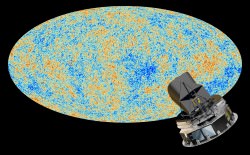
Consider this. In a cubic meter (or yard) of space. Alright, in a box of space about yay big (show with hands), there’s a finite number of particles that can possibly exist in that region, and those particles can have a finite number of configurations considering their spin, charge, position, velocity and so on.
Tony Padilla from Numberphile has estimated that number to be 10 to the power of 10 to the power of 70. That’s a number so big that you can’t actually write it out with all the pencils in the Universe. Assuming of course, that other lifeforms haven’t discovered infinite pencil technology, or there’s a pocket dimension containing only pencils. Actually, it’s probably still not enough pencils.
There are only 10 ^ 80 particles in the observable Universe, so that’s much less than the possible configurations of matter in a cubic meter. If the Universe is truly infinite, if you travel outwards from Earth, eventually you will reach a place where there’s a duplicate cubic meter of space. The further you go, the more duplicates you’ll find.
Ooh, big deal, you think. One hydrogen pile looks the same as the next to me. Except, you hydromattecist, you’ll pass through places where the configuration of particles will begin to appear familiar, and if you proceed long enough you’ll find larger and larger identical regions of space, and eventually you’ll find an identical you. And finding a copy of yourself is just the start of the bananas crazy things you can do in an infinite Universe.
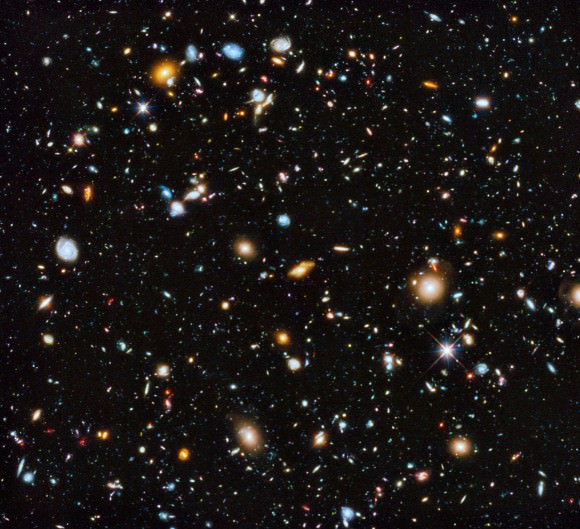
In fact, hopefully you’ll absorb the powers of an immortal version of you, because if you keep going you’ll find an infinite number of yous. You’ll eventually find entire duplicate observable universes with more yous also collecting other yous. And at least one of them is going to have a beard.
So, what’s out there? Possibly an infinite number of duplicate observable universes. We don’t even need multiverses to find them. These are duplicate universes inside of our own infinite universe. That’s what you can get when you can travel in one direction and never, ever stop.
Whether the Universe is finite or infinite is an important question, and either outcome is mindblenderingly fun. So far, astronomers have no idea what the answer is, but they’re working towards it and maybe someday they’ll be able to tell us.
So what do you think? Do we live in a finite or infinite universe? Tell us in the comments below.
Astronomy Cast Ep. 371: The Eddington Eclipse Experiment
At the turn of the 20th Century, Einstein’s theory of relativity stunned the physics world, but the experimental evidence needed to be found. And so, in 1919, another respected astronomer, Arthur Eddington, observed the deflection of stars by the gravity of the Sun during a solar eclipse. Here’s the story of that famous experiment.
Continue reading “Astronomy Cast Ep. 371: The Eddington Eclipse Experiment”
How Could You Capture an Asteroid?
We can’t just go into space with a big butterfly net or catcher’s mitt, so how in the world could we capture an asteroid?
Ah asteroids, those dinosaur-killing, Scrooge-McDuck-moneybins from heaven.
They’re great and all, but you know what would be better? All the asteroids gathered up and put in a nice safe orbit where we harvest out all their precious sweet, juicy platinum cores.
Instead of nervously scanning the heavens, wishing we had more iridium at our disposal, we could seek out all the asteroids in the Solar System and push them somewhere we can get at them, whenever we want after we dump them into the orbital equivalent of a lazy susan.
Okay fine, instead of pushing all the asteroids around, maybe we should start with one. Get that right and we can extend our plans to the rest of the delicious space rocks we crave.
I know this sounds like just another pie in the sky “Fraser-Cain-double-plus-crazy” plan, but I’m not the only one to propose this idea. In fact, NASA has expressed plans to reach out and capture an asteroid and maybe put it into orbit around Earth.
There are many benefits to this plan. We’ll learn just how hard it is to move asteroids around, should we find one on a dangerous trajectory. We’ll learn how to land on an asteroid, and extract its precious resources. And of course, there’s the science. So much to learn from a pet asteroid. Also, if anyone ticks us off we can lop off clumps and hurl it at them. So a dinosaur killing space rock, returned safely to Earth? That sounds a little dangerous. Possibly a species-wide Darwin awards moment.
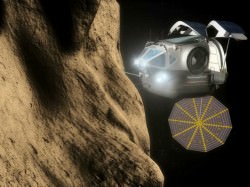
How exactly does one capture an asteroid, and how could we move it back to Earth without killing us all, and more importantly will the Aliens have Darwin awards when we accidentally wipe ourselves out? This sounds like a job for BRUCE WILLIS.
As you may suspect, scientists have come up with a vast collection of clever ideas to move asteroids around. They all come down to the same challenge. You somehow need to impart a thrust to an asteroid. NASA has also informed me that involving Bruce Willis is optional, despite my insistence and extensive letter writing campaign.
One basic idea would be to fly down to the asteroid and install some kind of thruster on it. Perhaps an efficient ion engine, or a rail gun that throws off chunks of rock into space, imparting a thrust to the asteroid. The problem is that asteroids are often spinning, so you’d need to stop that rotation before you could fire up the thrusters.
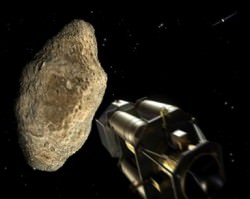
Another idea would be to set off nuclear explosions nearby and just push it in the right direction with raw explosive power. By setting off the nuke close enough to the asteroid’s surface, you expel vaporized rock, which acts like a thruster. Also known as the “Ben Affleck Special”.
This one’s going to sound crazy, but scientists are serious. Airbags. You could bump a large inflated bag against the asteroid again and again to slowly nudge it in the direction you want. The rotation doesn’t really matter because the time you contact the asteroid is so brief.
Don’t like that? How about a gravity tractor? Now I’ve got your attention! You could fly a spacecraft really close to the asteroid, which would then attract it slowly, pulling it in the direction you like. As long as the spacecraft keeps thrusting away from the asteroid, you’ll keep pulling it along like a kite on a string.
These are just some of the big ideas. Scientists have proposed some sort of one sided space graffiti, painting them silver, possibly attaching solar sails, or even vaporizing rock with lasers to provide thrust.
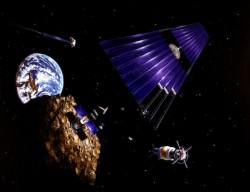
There’s another idea which deserves mention, and I’m going to warn you right now, it’s pretty terrifying. It’s called aerobraking. Instead of using energy to slow the asteroid and put it into the perfect orbit, we use the Earth’s atmosphere to help asteroids shed a tremendous amount of velocity.
By allowing an asteroid to pass briefly – briefly! – through the atmosphere of the Earth, you could decelerate it significantly. Make a few of these passes and you should be able to get it into a nice safe orbit around Earth. Of course, get it wrong and you crash an asteroid into Earth. So, there’s that. It would absolutely make a mess of our lawn, and we’d be the laughing stock of the local group.
Asteroids are precious resources, just waiting for us to reach out and harvest their minerals. Fortunately, we’ve got a range of strategies we can use to move them around. One of them has got to work… right?
Which idea for moving an asteroid do you like the best? Which one really freaks you out?
Weekly Space Hangout – March 20, 2015: Lee Billings’ Five Billion Years of Solitude
Host: Fraser Cain (@fcain)
Special Guest: Author Lee Billings, discussing his book “Five Billion Years of Solitude”(@LeeBillings / leebillings.com/)
Guests:
Dr. Pamela Gay (cosmoquest.org / @starstryder)
Morgan Rehnberg (cosmicchatter.org / @MorganRehnberg )
Brian Koberlein (@briankoberlein)
Continue reading “Weekly Space Hangout – March 20, 2015: Lee Billings’ Five Billion Years of Solitude”
Could the Death Star Destroy a Planet?
In the movie Star Wars, the Darth Vader’s Death Star destroyed a planet. Could this really happen?
You’ve watched Star Wars right? Is that still a thing? With the Starring and the Warring? Anyway, there’s this classic scene where the “Death Star” sidles up to Alderaan, and it is all like “Hey Planetoid, you lookin’ fine tonight” and then it fires up the superlaser and destroys the entire orb in a single blast. “BOOM”. Shortly followed by some collective group screaming on the interstellar forceway radio.
This is generally described as “science fiction”. And when you’re making up stories, anything you like can happen in them. George Lucas’ hunger for your childhood toy money wasn’t hampered by the pesky constraints of physics in any meaningful way.
Here at the Guide to Space, we get to take our own flights of fancy and pointlessly speculate for your amusement. That’s our job. Well, that and snark. Let’s consider what it would actually take to destroy a planet with a ‘pew pew’ style laser beam, and what kinds of energy would need to be harnessed in a fully armed and operational battle station.
Let’s go back and carefully review our “evidence”. The Death Star drifts in, charges up all its lasers into a superlaser blast focused on Alderaan. The planet then detonates and chunks fly off in every direction just like the pie eating contest in “Stand By Me”.
What we saw was every part of Alderaan given enough of a kick so that it was traveling at escape velocity from every other part of the planet. If the Death Star hadn’t delivered enough explosive energy, the planet might have fluffed up for a moment, but then the collective gravity would suck it all back in together, and then the slightly re-arranged, and likely now uninhabited planet would continue orbiting its star.
You can imagine doing this the slow way. Take each continent on Alderaan, load it up into a rocket and blast that rocket off into space as though it was on escape trajectory from the planet. Sure, you’d would need an incomprehensible number of rocket launches to get that material off the planet. But hey, midichlorians, blue finger lightning and ESP.
Fortunately, as you carted away more and more of the busted up rock, it would have less mutual gravity, and so the rocket launches would require less and less energy to get the job done. Eventually, you’d just be left with one last chunk of rock that you could just force ninja kick into the neighboring star.
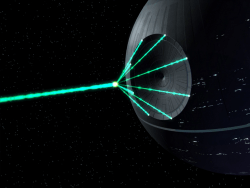
So how much energy is that going to take? Well, there’s an “easy” calculation you can make. The energy you’d need is equal to 3 times the gravitational constant (6.673 x 10^-11) times the mass of the planet squared divided by 5 times the planet’s radius. Do this math for an Earth-sized/mass world, and let’s see that’s, two and one, carry the 5… and you get 2 x 10^36 joules. That’s a two followed by 36 zeros in joules. Is that a lot? That sounds like a lot.
Well, our own Sun puts out 3 x 10^26 joules per second. So, if you poured all the energy from the Sun into the task of tearing apart the Earth, it wouldn’t have enough energy to do it. In fact, you’d need to focus the light of the Sun for a full week to get that level of planet destruction done.
According to ancient Star Warsian dork scholars, the Death Star (SOLUS MORTIS) is powered by a hyperreactor with the output of multiple main sequence stars. So there you go, problem solved. It’s the size of a small moon, but it’s more powerful than many stars. Of course it can destroy a planet.
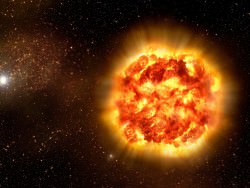
The Death Star clearly destroyed Alderaan. We watched it explode. I saw it, you saw it. We heard the screams of millions of souls cry out. It happened. But what if it wasn’t a beam thingy?
Our math is good, but clearly we’re not enlightened enough to comprehend the true wisdom hidden within the Lucasian scriptures. Perhaps the Death Star’s superlaser was just a targeting laser. Directing the placement of gigantic antimatter bomb. According to Ethan Siegel, from “Starts With a Bang,” you’d only need 1.24 trillion tonnes of antimatter.
Imagine you made a bomb out of that much antimatter iron – if that’s even a thing – you’d only need a sphere about 3 km across. If the Death Star is 150 km across or so, they could carry a bunch of these. Very carefully. Like super carefully. Okay, maybe it’d be a good idea if everyone took off their boots, and make sure they only talked with their inside voices.
Obviously, Star Wars is a story, so anything, ANYTHING can happen. The future is unknown, and we might discover all kinds of weirdo physics and harness them into all kinds of powerful weapons. I’m only suggesting, that a space station capable of deploying a week’s worth of solar energy in a single second might be a stretch. And maybe, George, if you just done a little back of the napkin math, we wouldn’t be talking about this right now. Also, maybe no Ewoks. I’m just saying.
Where do you stand on the feasibility of imaginary space station weaponry? How big a planet can your imagination destroy?
Astronomy Cast Ep. 370: The Kaufmann–Bucherer–Neumann Experiments
One of the most amazing implications of Einstein’s relativity is the fact that the inertial mass of an object depends on its velocity. That sounds like a difficult thing to test, but that’s exactly what happened through a series of experiments performed by Kaufmann, Bucherer, Neumann and others.
Continue reading “Astronomy Cast Ep. 370: The Kaufmann–Bucherer–Neumann Experiments”





